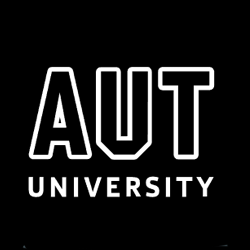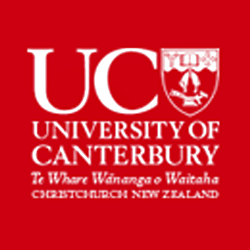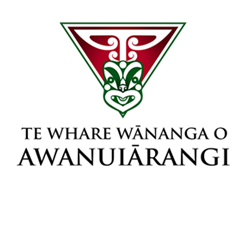
Help or hindrance: Blended approaches and student engagement
Status
Completed: 10 November 2012
Project Details
A project to identify effective strategies teachers can use within a blended learning environment to enhance learner engagement and achievement. A collaboration of four universities, Massey University, Auckland University of Technology, Canterbury University and Te Whare Wānanga o Awanuiārangi.
Aims:
The project aimed to:
- identify appropriate engagement strategies in a blended learning context
- identify student preference for, and perceptions of, a blended learning environment
- determine the effect of blended learning strategies on student engagement and the students’ perceptions of the quality of their learning experience
- establish the relationship between student learning orientations and engagement strategies in a blended learning context
- determine effective methods in a learning management system of identifying students at risk of disengagement
- develop an integrated toolkit of effective engagement strategies that will help academic staff to scaffold and support student learning.
Methodology:
The project adopted a mixed-methods approach, incorporating both qualitative and quantitative data-collection methods. The mixed-method approach was used to collect and analyse data. In total, 541 participants from two North Island universities participated in this project.
Team

Dr Lynn Jeffrey
Contact Project Leader
Massey University
John Milne
Massey University
Andrew Higgins
Auckland University of Technology (AUT)
Alison Holmes
University of Canterbury
Keith Comer
University of Canterbury
Gordon Suddaby
Massey University
(the late) Dr Mark Laws
Te Whare Wānanga o AwanuiārangiStatus
Funding
$140,777.00 (excl GST)
Key Findings
- Blended learning could offer a richer learning experience than either online or traditional modes of learning.
- Teachers were the gatekeepers to student experiences.
- Teachers were more conservative and less enthusiastic than students about embracing opportunities offered by technology.
- Teachers lacked sufficient time, support and resources to create effective blended learning environments.
- In a blended environment students engaged in a blend of learning behaviours and activities that had personal efficacy and relevance for them.
- High levels of engagement and persistence in structured and other learning activities were associated with academic success.
- Levels of engagement were strongly influenced by assessment and online activities such as quizzes.
- Using the 10 engagement strategies at the appropriate time increased student engagement.
- The greatest potential for improving student engagement came from using primers.
- Potential dropouts could be retrieved while they were in the ‘zone of discontent’.
- Most teachers had well-organised courses with good structures.
- Social presence was largely underdeveloped in most online environments.
- Levels of disengagement in the classroom were of concern to teachers.
- About one third of students either dropped out or seriously considered dropping out.
- High dropout rates were associated with higher course grades.
Overall findings
- The quality of learning depended on the depth of student engagement in the learning process.
- The systematic application of all 10 engagement strategies identified in this study to both online and classroom learning gave teachers the best chance of achieving high levels of student engagement.
- The skill and effort that teachers used to create learning experiences was the single most important determinant of the quality of the learning environment.
- Teachers were time-poor and lacked adequate technical support and training in pedagogical principles.
- Blended learning could make a difference.
Key Recommendations
Set up a national community of learning | Much learning and development in the practice of good teaching in a blended environment can be achieved through the creation of a national community of learning for tertiary teachers.
Establish additional groups to share strategies and tools | One example of an existing community of practice is the Ako Aotearoa Academy of Tertiary Teaching Excellence. Additional groups could be established, that might host online wiki(s) for tertiary teachers to share teaching and learning strategies, examples and tools for blended learning and engage in further research to measure the effect of engagement strategies both in the classroom and online.
Lead cultural change within teaching | Retention has clear economic and reputational implications. In addition to the broader obligations to develop a sense of belonging and social integration, institutions must take a leadership role in changing the teaching culture.
Develop a strategy to improve teacher performance and accountability | A key area of focus would be the 30 percent of students who withdraw or consider withdrawing from their studies. A major strategy should be to improve teacher performance and accountability.
Develop evaluation and data collection practices | The strategy should focus on developing objective procedures and practices for evaluating teaching practice (see Stein et al., 2012). Reviews of teacher performance should consider retention rates and success in creating engaging courses that result in higher levels of learning. Collecting data at the institutional level to identify areas having particular retention problems should also be carried out.
Redesign courses for blended learning | Teachers should redesign their courses for blended learning, not just by adding an online component to their regular teaching. The best courses are thoughtfully considered and the online and classroom components coherently integrated. These courses had been designed starting with a blank slate.
Use the new toolbox for tertiary organisations and teachers | A toolbox has been developed to support tertiary organisations and teachers to engage with blended learning effectively. The toolbox contains strategies, tools and examples that can be used when designing blended learning courses. These are presented in a framework that allows the user to work systematically through the design process, or to select items that have particular value.
A report prepared by Lynn M. Jeffrey, John Milne, Gordon Suddaby and Andrew Higgins.
(PDF, 3.04 MB, 119-pages).
- 10 November 2012
A report prepared by Lynn M Jeffrey, John Milne, Gordon Suddaby and Andrew Higgins.
(PDF, 4.67 MB, 20-pages).
- 10 November 2012